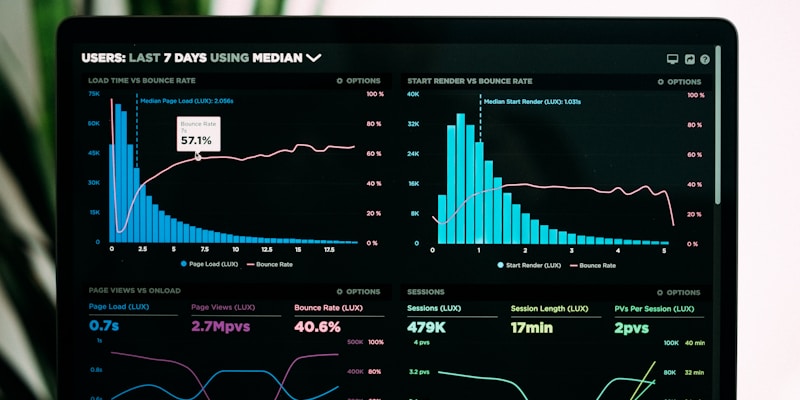Getting Started with Workflow Orchestration
A comprehensive guide to building and managing automated workflows using modern orchestration tools.

Getting Started with Workflow Orchestration
Section titled “Getting Started with Workflow Orchestration”Hey everyone, EduarD3V here. If you’re reading this, you’re probably curious about how to make your business operations run smoother without pulling your hair out. Workflow orchestration is like the secret sauce that turns chaotic processes into a well-oiled machine. At Stavily, we’ve built this from the ground up for real business automation, and I’m excited to walk you through it.
What Makes Workflow Orchestration Special?
Section titled “What Makes Workflow Orchestration Special?”Think of workflow orchestration as the maestro conducting your digital orchestra. It coordinates automated processes across all your apps, services, and systems, making sure everything plays in harmony. But unlike basic automation tools, Stavily’s orchestration is smart—it learns, adapts, and scales with your business.
The Building Blocks of a Stavily Workflow
Section titled “The Building Blocks of a Stavily Workflow”Triggers: What Kicks Things Off
Section titled “Triggers: What Kicks Things Off”Every great workflow starts with a trigger, like a spark that lights the fire. In Stavily, triggers can be:
- Scheduled events (think cron jobs for regular check-ins)
- API calls from your apps
- File changes in your system
- User actions, like submitting a form
Actions: The Workhorses
Section titled “Actions: The Workhorses”Actions are where the magic happens. These are the specific tasks your workflow performs:
- Sending notifications via Slack or email
- Processing data from APIs
- Updating databases securely
- Running custom scripts through our plugin system
Conditions and Logic: Adding Smarts
Section titled “Conditions and Logic: Adding Smarts”Modern workflows aren’t just linear—they think! Stavily includes powerful conditional logic:
- If/else branches for different scenarios
- Smart error handling that retries failed steps
- Parallel processing to speed things up
- Memory-driven decisions that learn from past runs
Let’s Build Your First Workflow in Stavily
Section titled “Let’s Build Your First Workflow in Stavily”Ready to dive in? We’ll create a simple incident response workflow that alerts your team when something goes wrong. Here’s how, step by step:
-
Map It Out: Grab a piece of paper and sketch your process. For our example: “When a server error occurs, notify the team, gather logs, and attempt auto-recovery.”
-
Spot the Connections: Figure out which systems talk to each other. Maybe your monitoring tool (like Datadog) triggers the workflow, which then hits your Slack API and log storage.
-
Set Your Trigger: In Stavily’s web UI, create a YAML workflow. Use a sensor agent to watch for error events from your monitoring system.
-
Add Actions: Chain them together—send a Slack alert, collect logs via our secure action agents, and try a restart if it’s safe.
-
Handle Errors Like a Pro: Add retry logic and fallbacks. If the auto-restart fails, escalate to a human with detailed context.
-
Test It Out: Run simulations in our platform. Check that it handles edge cases, like network outages or permission issues.
Here’s a quick YAML snippet to get you started:
workflows: - name: "incident-response" triggers: - type: "sensor-agent" monitor: "server-errors" steps: - name: "alert-team" action: "slack-notification" channel: "#incidents" - name: "gather-logs" action: "collect-logs" retry: 3 - name: "auto-recover" action: "restart-service" condition: "if safe"Stavily’s Best Practices for Success
Section titled “Stavily’s Best Practices for Success”Design Smart
Section titled “Design Smart”- Start Small: Build simple workflows first, then layer on complexity as you get comfortable.
- Go Modular: Create reusable components that you can mix and match across workflows.
- Plan for Chaos: Always build in error recovery—our memory system helps workflows learn from failures.
- Watch Everything: Use our real-time monitoring to see exactly what’s happening, with full audit trails.
Performance Tips
Section titled “Performance Tips”- Async All the Way: Let long-running tasks happen in the background so your workflows stay snappy.
- Manage Resources: Our platform auto-scales, but keep an eye on usage to optimize costs.
- Scale Big: Design for growth—Stavily handles 10,000+ concurrent processes with sub-200ms responses.
Common Hiccups and How to Fix Them
Section titled “Common Hiccups and How to Fix Them”Stuck with Complex Dependencies?
Section titled “Stuck with Complex Dependencies?”Fix: Stavily’s orchestration engine uses dependency graphs to manage tangled relationships. Just define what needs what, and we handle the rest.
Errors Slowing You Down?
Section titled “Errors Slowing You Down?”Fix: Our intelligent agents include built-in retry logic and adaptive memory that learns from past errors to prevent repeats.
Debugging a Nightmare?
Section titled “Debugging a Nightmare?”Fix: Dive into our detailed logs and real-time dashboards. See exactly where things went wrong and why.
What’s Next for Workflow Orchestration?
Section titled “What’s Next for Workflow Orchestration?”As businesses get more complex, orchestration is becoming essential. We’re seeing exciting trends like:
- AI-Driven Smarts: Machine learning that optimizes your workflows automatically
- Real-Time Reactions: Event-driven setups that respond instantly to changes
- Microservices Magic: Coordinating distributed systems effortlessly
- No-Code Power: Making orchestration accessible to everyone, not just developers
Jump In with Stavily
Section titled “Jump In with Stavily”Stavily makes workflow orchestration easy and powerful. Our platform gives you:
- A drag-and-drop visual designer for quick setups
- A massive plugin marketplace for instant integrations
- Live monitoring with enterprise security
- Smart agents that scale and learn
Ready to transform your operations? Head over to Stavily and start building. Your future self will thank you—trust me, it’s a game-changer.
Got questions? Drop them in the comments or join our community. Let’s automate together!